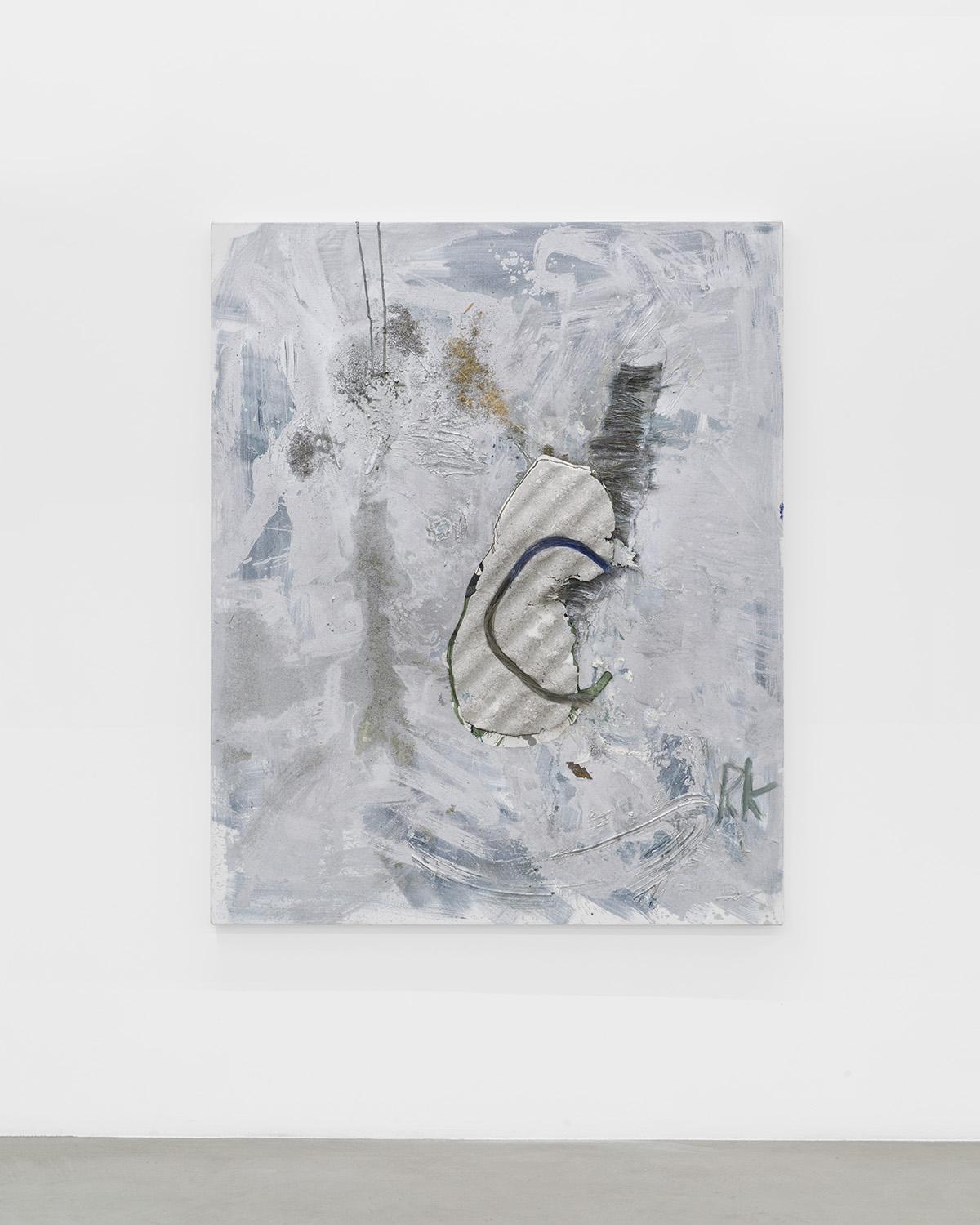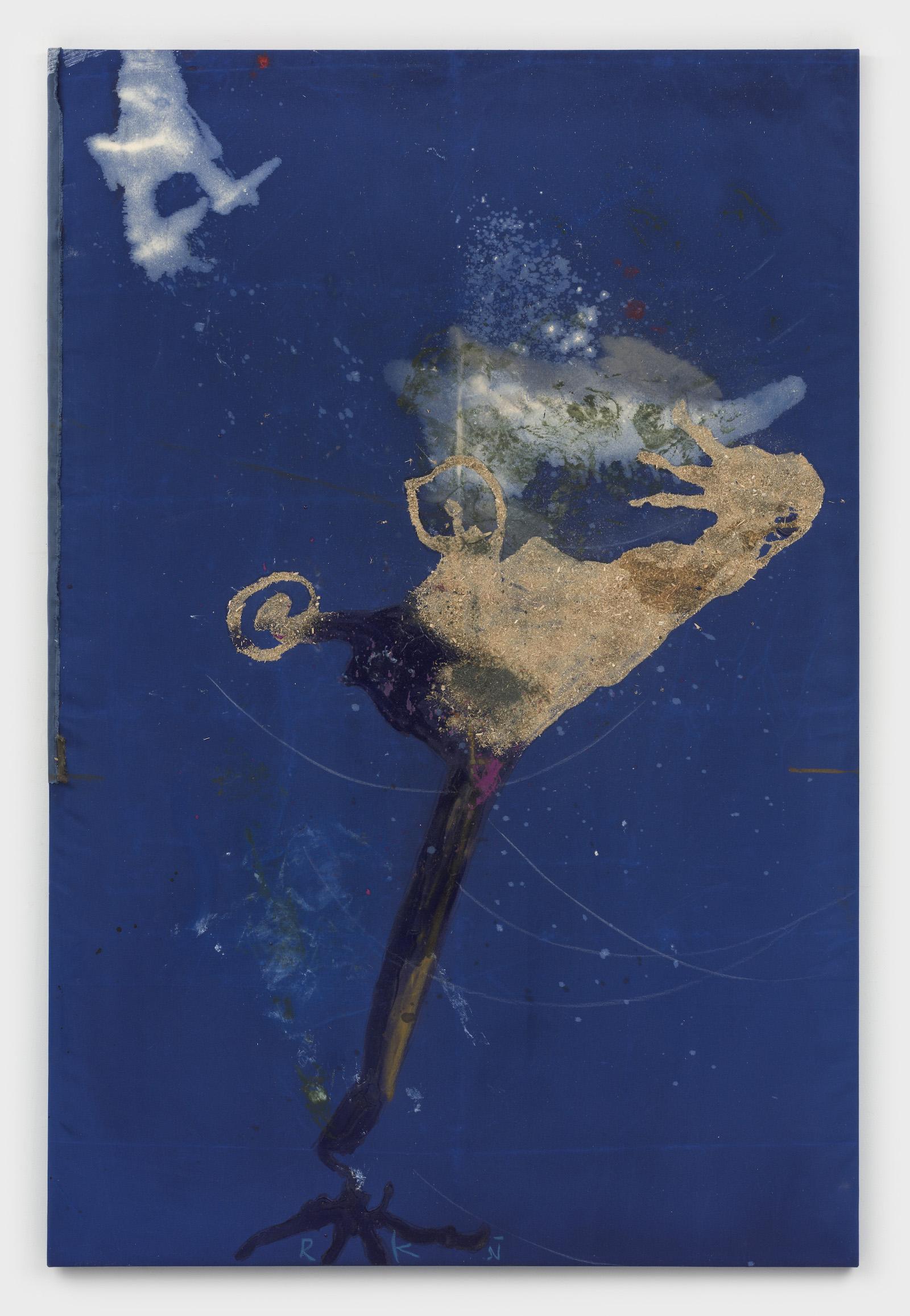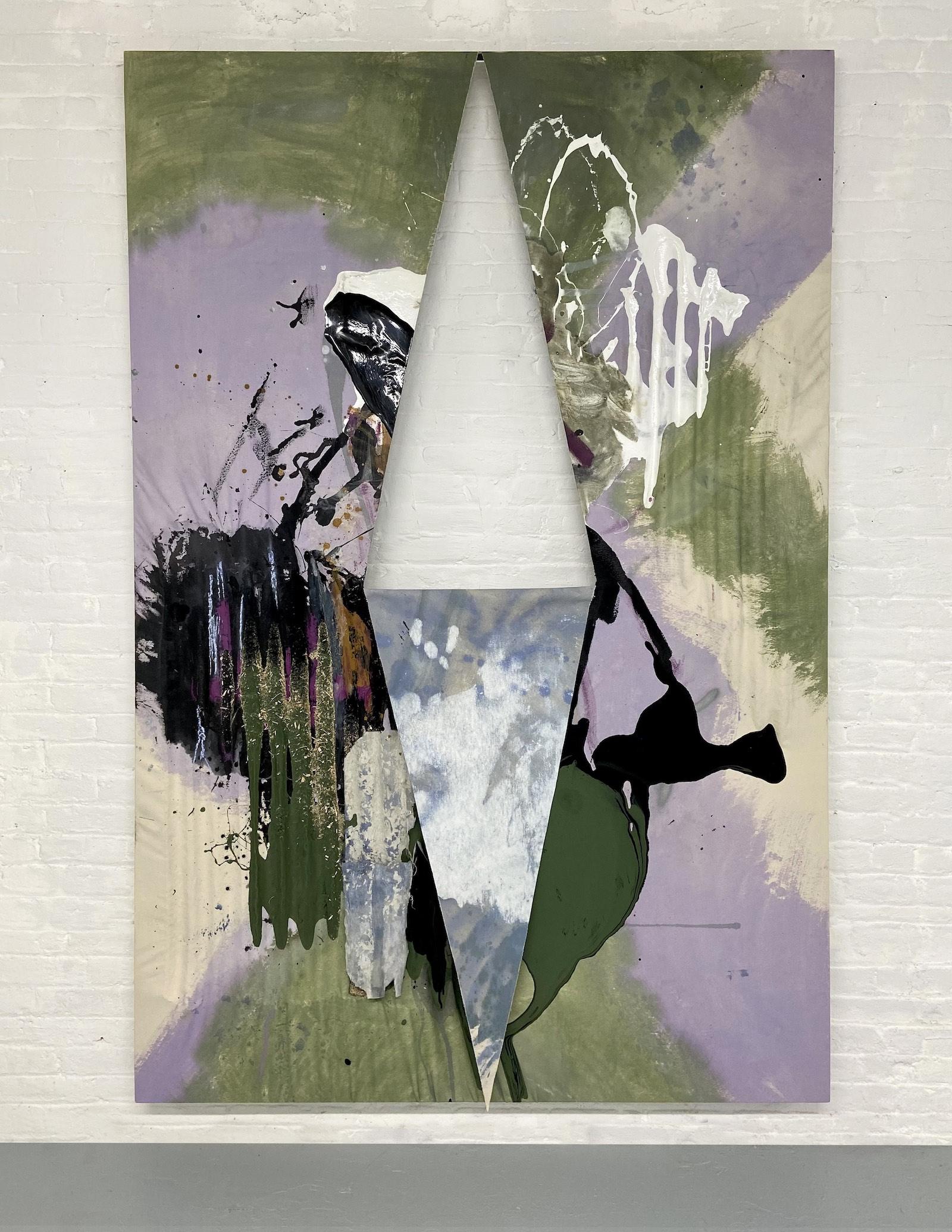Ultimately, Keyser is an agile navigator of the in-between; She operates in the shifting realm between the cosmos and deep earth, between the poetic and lyrical, and the gruff and impenetrable.
Most of all, she aims to make concrete the ineffable, the nonphysical, the relational, the emotional, the sense-based—sound, feel, smell, etc. And she wants to do the reverse—unsolidifying and unraveling the known, showing what can’t be defined.
In an essay for a zine created in conjunction with her current show at Parrasch Heijnen Gallery in LA, on view through August 7, Jenny Monick wrote of how “our descriptions’ willingness to collaborate one’s parts, of aspects, and of bodies and where they happen, when, and what they are made of, and of space and the in-between of bardos.” The bardo, following Buddhism, is “an intermediate, transitional, or liminal state between death and rebirth.”
In Keyser’s work, life and death are in continual dynamic play. Forms change appearance and relation to one another alternating between solid and ephemeral, between composed and agitated. Keyser continually translates one material or medium into an ever-fluctuating message.
On the walls of her Brooklyn studio are photos from a zine documenting the subject of her current exhibition, at Parrasch Heijnen. The show's title Arp 273 refers to a pair of interacting galaxies—one fell through the other 300 light-years away. The idea behind how forms fall into and through one another, affecting their positions and holding them in a relationship through dynamic is based on the research of astronomer Halton Arp who, in his 1966 Atlas of Peculiar Galaxies, described how this event happened and the pair’s uncanny resemblance to a rose and its stem.
To illustrate the idea, she tells how she and her fourteen-year-old son, Winslow, have been making paintings together at home. “After we’ve dropped ink on paper,” she tells Art & Object, “we wonder about all of the things it could be. It’s an exercise in holding things loosely enough that they could be more than one thing, not to foreclose on form, and then discuss what they could be--it’s about forms collaborating aspects and influencing each other.” It’s also about how someone could throw something into a field of people and affect something major through a violent act, or conversely, proliferate love.
Among the images in the show is a drawing that the legendary installation artist Paul Thek, who died of AIDS in 1988, made for Susan Sontag together with and a letter he sent to her. Both are currently held by UCLA in the Young Research Library.
































